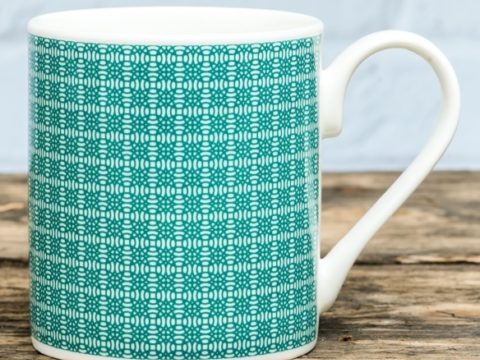The Mystery of Queen Margaret's Legacy
One of the areas of discord between Henry VIII of England and James IV of Scotland in 1513 was the matter of a legacy that was due to Henry’s sister, Margaret, who was James’ wife. The withholding of the legacy by Henry VIII became a bone of contention between the two kings, more, it would seem, for the principle of the matter, than the actual value. Non-payment of it was one of the grievances contained in James’ declaration of war on Henry in July 1513.
But what was the legacy?
The truth is, it is impossible to be sure, as there are conflicting accounts, but it was probably money.
It first appears in the record in August 1512, when Lord Dacre, Henry’s Warden of the March, wrote to Thomas Ruthall, the Bishop of Durham, saying that James was angry because his wife’s legacy was being withheld ‘in malice of him’. Dacre recommended that it should be paid, partly because it would be dishonourable not to, and partly because ‘it is so small.’ The reference to ‘payment’ suggests that it consisted of money.
We can also infer that the legacy was not so great that it could not be carried easily and safely, as, in April 1513, Dr West, Henry’s envoy to Scotland, confirmed to Margaret that he had it with him. He would, however, only hand it over if James promised that he would not invade England whilst Henry was invading Scotland’s ally, France. From this we can be sure that the legacy did not consist of land.
Following West’s statement, Margaret wrote to Henry on 11th April 1513, that she was ashamed that her brother was making so much of the matter. She was not worried about it, she assured him, as her husband, who treated her better every day, would compensate her. A transcription of the letter may be found in Volume 1 of Sir Henry Ellis’ Original Letters, Illustrative of English History.
James confirmed his intent to ensure Margaret did not lose out, by telling Dr West that, as it was being withheld to provoke him, he would pay the amount to Margaret himself. He also told West that he knew the legacy to be greater than West was claiming. Again, the wording of James’ statement suggests it was money.
Where did the legacy come from?
Most English historians state that the legacy was from Margaret’s father, Henry VII, and this would seem to be borne out Margaret’s letter cited above, in which she refers to ‘our father’s legacy’, using ‘our’ in the royal plural. James, too, refers to his wife’s father’s legacy.
But Henry VII’s will does not contain any legacy to his daughter. She had been well-provided for in her marriage treaty and nothing further could be expected. Henry’s will was transcribed by Thomas Astle in 1722, is summarised in the Calendar of Letters and Papers of the Reign of Henry VIII, and the original is also available to be viewed in the National Archive, so we examined it there. It is extremely worn in places, thus it would be difficult to swear it did not contain a reference to a legacy to Margaret, but we found nothing different from the summary in the Calendar. The document itself is in English, so it is not a matter of faulty Latin!
In addition, Henry had executors who were responsible for executing the will. It is highly unlikely that the King would have flouted the law to interfere with an inheritance – such a proceeding would have been seen as an arbitrary abuse of power that would have raised eyebrows amongst his nobles. If his own father’s will were not sacrosanct, where would that leave theirs?
Although, to counter this argument, we can observe that Henry VIII was very ready to interpret some ambiguous bequests in the Countess of Richmond’s will in his own favour, to the detriment of her college of St John.
Margaret’s biographer, Maria Perry, in ‘Sisters to the King’ says that the legacy consisted of personal possessions that were left to Margaret by her brother, Arthur, and others from her grandmother, Lady Margaret Beaufort, Countess of Richmond. Ellis states, without citing his source, that the legacy consisted of jewels.
The will of the Countess did bequeath jewels to Margaret, along with her sister, Mary, and sister-in-law, Katharine of Aragon, so that seems to be in order, although it is not consistent with references to the legacy as money, or as from Margaret’s father.
George Buchanan’s 'History of Scotland', first published (in Latin) in 1582, claims that the legacy was actually from Margaret’s brother, Arthur, and this has been repeated elsewhere. However, there is no evidence that Arthur left a will, although he might, perhaps have made deathbed requests. If he did make such a bequest to his sister, given that she remained in England for eighteen months after his death, presumably she would have taken anything he bequeathed her to Scotland in 1503.
Buchanan’s translator, James Aikman, who published the work in English in 1827, adds a footnote saying that the legacy was from Henry VII – which is where we started.
To recapitulate all that we know for certain: Margaret requested a legacy she said was from her father, of an unspecified sum, but described by Lord Dacre as small. Henry refused to hand it over, and the matter further soured an already fractious relationship between the two countries.
Margaret, Queen of Scots
Family Tree








